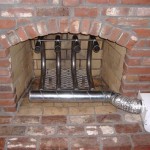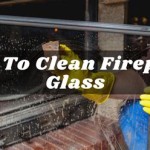Freestanding Wood Burning Fireplace Chimney Considerations
The installation of a freestanding wood burning fireplace provides both aesthetic appeal and a supplemental heating source for residential and commercial spaces. A critical component of such a system is the chimney, responsible for safely venting combustion byproducts away from the living area. The selection and installation of a chimney for a freestanding fireplace require careful consideration of building codes, safety standards, and optimal performance parameters. This article explores key aspects related to freestanding wood burning fireplace chimneys, encompassing material choices, installation requirements, maintenance protocols, and safety considerations.
Chimney Material Selection
The chimney's construction material significantly impacts its performance, durability, and safety characteristics. The two primary materials utilized for freestanding wood burning fireplace chimneys are stainless steel and masonry, each possessing distinct advantages and disadvantages.
Stainless steel chimneys, typically double-walled or triple-walled, offer relatively lightweight construction, ease of installation, and superior corrosion resistance compared to traditional masonry. These chimneys are often modular, simplifying the installation process and allowing for greater flexibility in routing the chimney system through the building structure. Furthermore, stainless steel chimneys heat up rapidly, promoting a stronger draft and reducing the likelihood of creosote buildup. The inner liner of a stainless steel chimney is usually constructed from a higher grade of stainless steel, such as 304 or 316L, providing enhanced protection against the corrosive acids produced during wood combustion. Insulation between the inner and outer walls further enhances thermal performance and reduces heat transfer to combustible materials in the vicinity of the chimney. However, stainless steel chimneys generally exhibit a shorter lifespan compared to masonry chimneys and may be more susceptible to damage from external impacts.
Masonry chimneys, traditionally constructed from brick, block, or stone, offer inherent aesthetic appeal and considerable thermal mass. Their substantial weight provides excellent stability and resistance to high winds. Masonry chimneys also possess a longer lifespan when properly maintained. However, masonry chimneys are considerably heavier and require a more substantial foundation to support their weight. Installation is more labor-intensive and time-consuming compared to stainless steel chimneys. Furthermore, masonry chimneys are prone to cracking and deterioration due to thermal expansion and contraction, moisture penetration, and the corrosive effects of flue gases. A crucial element of a masonry chimney is the flue liner, which protects the chimney structure from the acidic byproducts of combustion. The flue liner can be made of ceramic, clay tile, or stainless steel. Regular inspection and maintenance of the flue liner are essential to ensure its integrity and prevent the escape of harmful gases into the living space. Masonry chimneys also take longer to heat up, resulting in a potentially weaker draft during initial operation.
Selecting the appropriate chimney material involves evaluating factors such as budget, aesthetic preferences, installation constraints, and climate conditions. Building codes and regulations often dictate specific requirements for chimney materials and construction, which must be strictly adhered to.
Installation Requirements and Clearances
The safe and efficient operation of a freestanding wood burning fireplace depends heavily on proper chimney installation. Adherence to manufacturer's instructions, local building codes, and nationally recognized standards, such as those published by the National Fire Protection Association (NFPA), is paramount. Key installation considerations include:
Chimney Height: The chimney must extend sufficiently above the roofline to ensure adequate draft and prevent downdrafts caused by wind turbulence. A common rule of thumb stipulates that the chimney should extend at least three feet above the highest point where it penetrates the roof and at least two feet higher than any portion of the building or adjacent structure within ten feet horizontally. Local codes may impose more stringent requirements based on specific site conditions.
Clearances to Combustible Materials: Maintaining adequate clearances between the chimney and combustible materials is critical to prevent fire hazards. The manufacturer's instructions typically specify the required clearances, which vary depending on the type of chimney and its construction. These clearances apply to walls, floors, ceilings, and any other combustible materials in the vicinity of the chimney. Heat shields or other protective measures may be necessary to reduce clearances in certain situations.
Chimney Support: The chimney must be adequately supported to withstand its weight and resist wind loads. For freestanding chimneys, a stable foundation is essential. Bracing or anchoring may be required to prevent displacement or collapse during high winds. The chimney support system should be designed to accommodate thermal expansion and contraction of the chimney material.
Proper Connection to the Fireplace: The connection between the fireplace and the chimney should be airtight to prevent the leakage of flue gases into the living space. This connection typically involves a stovepipe, which must be properly sized and secured to both the fireplace and the chimney. The stovepipe should be inspected regularly for signs of corrosion or damage.
Thimble Installation: When a chimney passes through a wall or ceiling, a thimble is required to provide a fire-resistant barrier and maintain proper clearances to combustible materials. The thimble must be constructed of non-combustible material and sized to accommodate the chimney. Proper installation of the thimble is crucial to prevent the spread of fire in the event of a chimney fire.
Professional installation by a qualified and experienced technician is highly recommended to ensure compliance with all applicable codes and standards. A thorough inspection of the completed installation should be performed to verify its integrity and safety.
Maintenance and Safety Considerations
Regular maintenance and proper operation of a freestanding wood burning fireplace and its chimney are essential for ensuring safety and optimal performance. Neglecting maintenance can lead to chimney fires, carbon monoxide poisoning, and reduced heating efficiency.
Regular Chimney Inspections: The chimney should be inspected at least annually by a qualified chimney sweep. The inspection should include a visual examination of the chimney's exterior and interior, as well as an assessment of the flue liner's condition. Inspections can identify potential problems, such as cracks, deterioration, creosote buildup, and obstructions.
Chimney Sweeping: Chimney sweeping is necessary to remove creosote buildup, which is a highly flammable substance that accumulates in the chimney as a byproduct of incomplete combustion. The frequency of chimney sweeping depends on the type of wood burned, the frequency of fireplace use, and the efficiency of the combustion process. As a general guideline, the chimney should be swept when creosote buildup exceeds one-eighth of an inch in thickness. Using seasoned firewood and ensuring adequate airflow during combustion can help minimize creosote formation.
Carbon Monoxide Detectors: Carbon monoxide (CO) is a colorless, odorless, and deadly gas that can be produced during wood combustion. Installing carbon monoxide detectors on every level of the home, particularly near sleeping areas, is crucial for detecting CO leaks and providing early warning. Detectors should be tested regularly and replaced according to the manufacturer's instructions.
Proper Firewood Storage: Firewood should be stored in a dry, well-ventilated area away from the house to prevent insect infestations and mold growth. Stacking firewood off the ground and covering it with a tarp can help maintain its dryness. Never store firewood directly against the house, as this can create a fire hazard and attract pests.
Safe Fire-Starting Practices: Use approved fire starters, such as kindling or commercially available fire starter logs. Avoid using flammable liquids, such as gasoline or kerosene, to start a fire, as these can create a dangerous explosion hazard. Never leave a fire unattended, and ensure that the fireplace screen is in place to prevent sparks from escaping into the room.
Understanding Creosote Formation: Creosote forms due to incomplete combustion. Factors which influence production include burning unseasoned wood (high moisture content), restricted air supply, and cooler chimney temperatures. These factors promote condensation of unburnt gases, leading to creosote deposition.
Waterproofing the Chimney: Masonry chimneys are porous and susceptible to water damage. Applying a waterproofing sealant to the chimney's exterior can help prevent water penetration and protect the chimney structure from freeze-thaw damage. The sealant should be breathable to allow moisture to escape from the chimney.
By adhering to these maintenance and safety guidelines, homeowners can enjoy the warmth and ambiance of a freestanding wood burning fireplace while minimizing the risks associated with its operation.

What Is A Freestanding Wood Stove Fireplace Service Experts

Wood

Freestanding Wood Burning Stoves Hearth And Home

Freestanding Wood Burning Stoves Sierra Hearth And Home

Freestanding Wood Burning Stoves Hearth And Home

Fernwood Free Standing Wood Stove Freestanding Burning Stoves

Stoves Smith May Inc

Wood Gas Pellet Freestanding Stoves Flue Tech Inc

Modern Wood Stove Guide All You Need To Know 2024 Field Mag

Freestanding Gas Burning Stoves Sierra Hearth And Home
Related Posts








